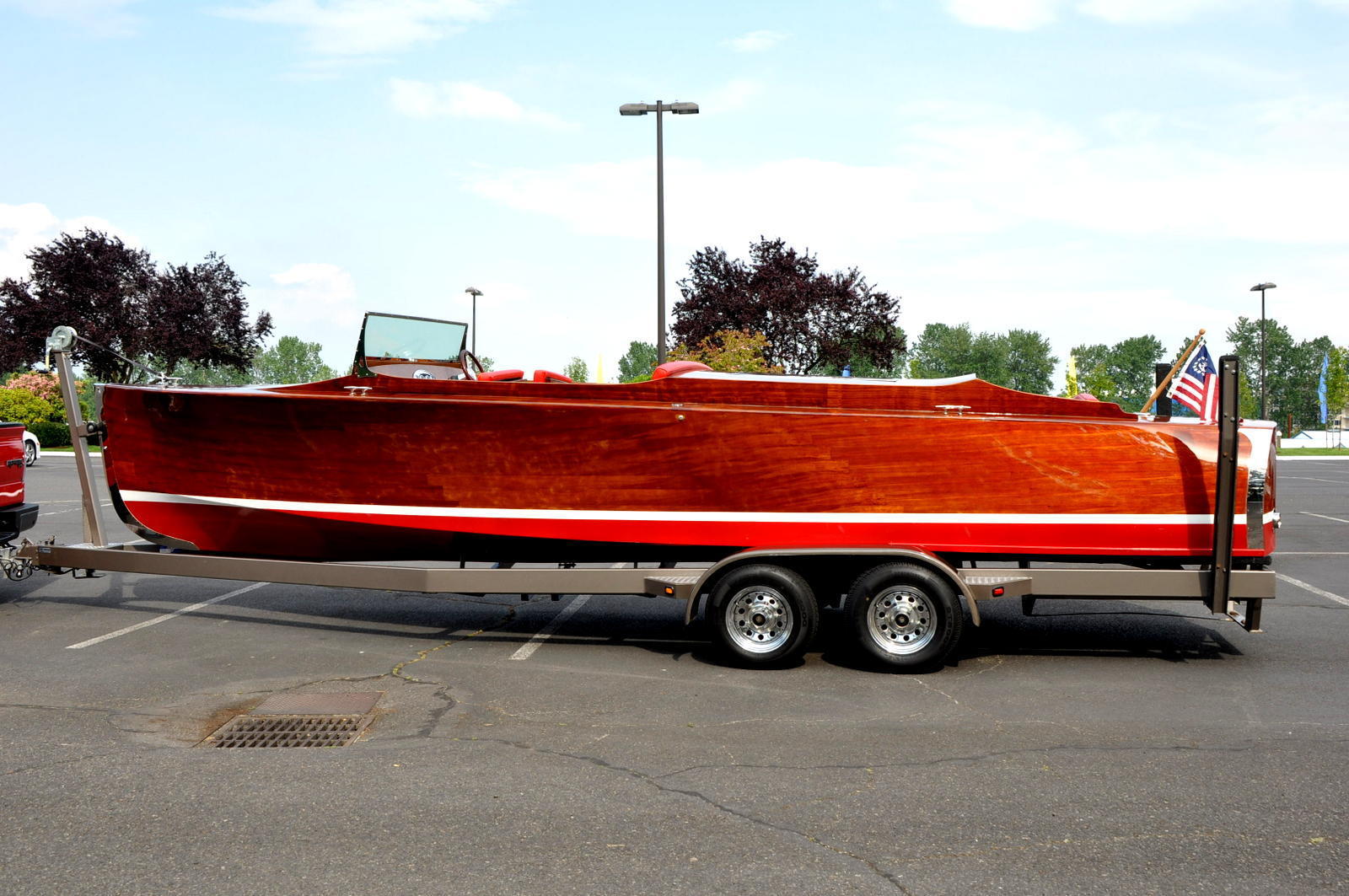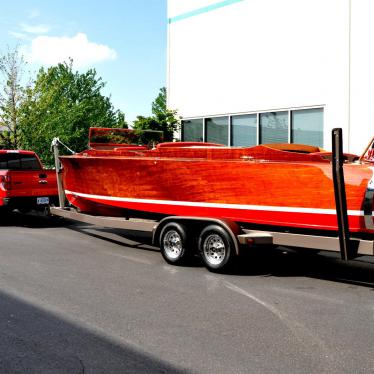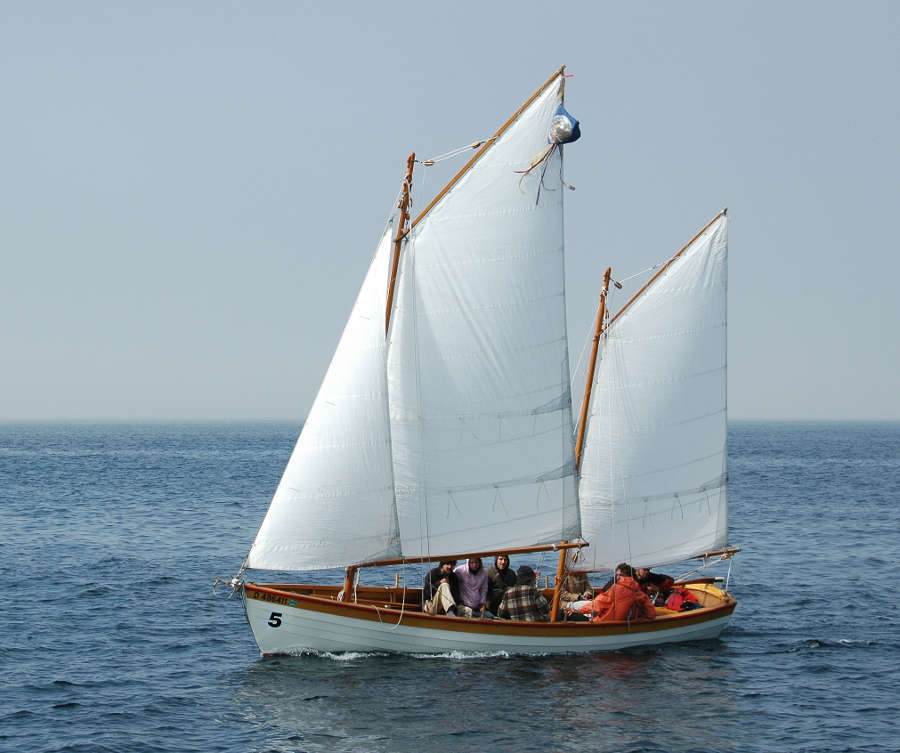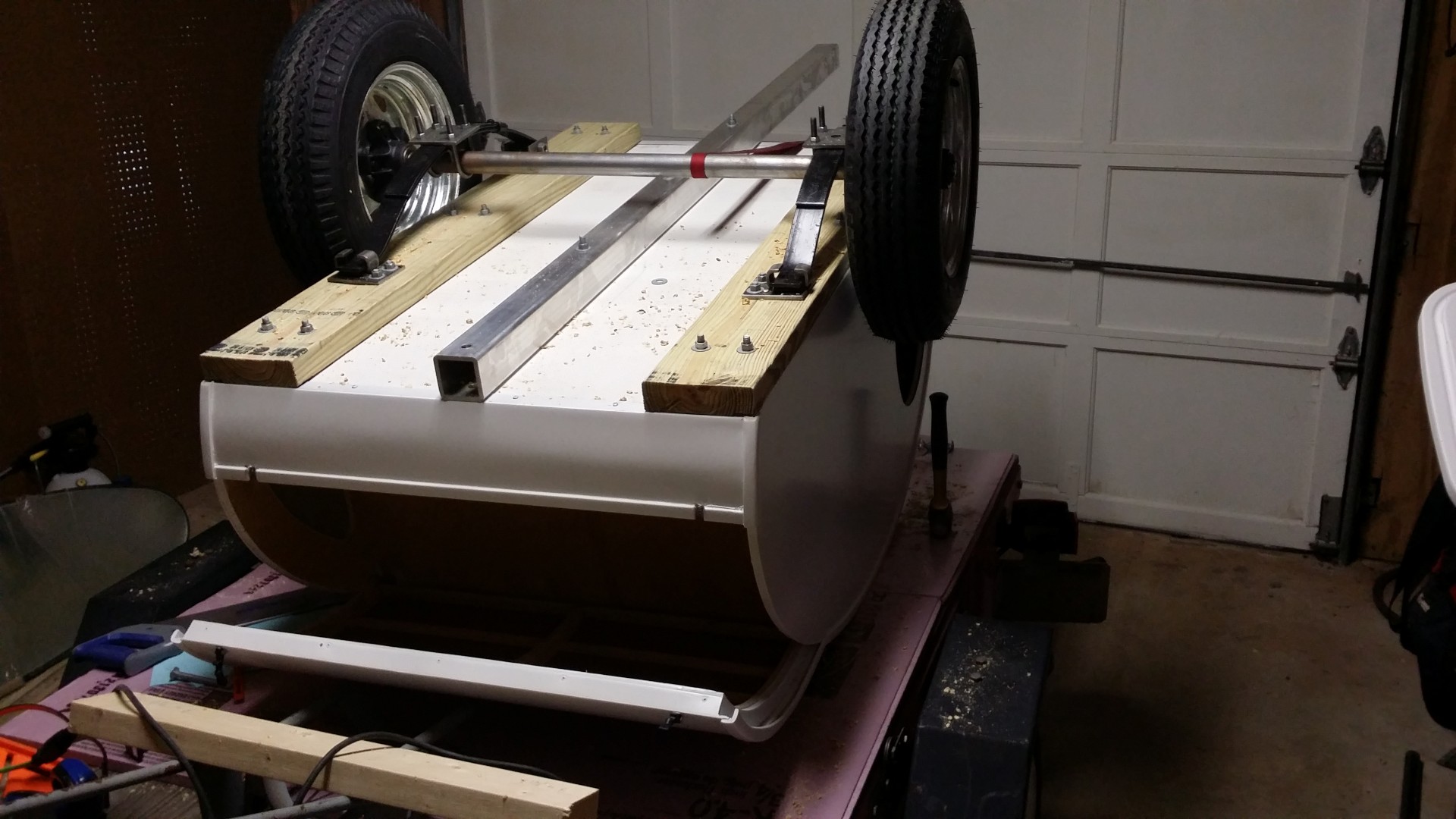Saturday, 29 October 2016
Logan Museum Odawa Paddle Online
The Logan Museum of Anthropology - Beloit College has updated their online artifacts catalog to include new color photos of the circa 1900 Odawa paddle in their collection. Up until now, the only images were grainy black and white photo from an out of print exhibition catalog (see my previous post here).


Ottawa Canoe Paddle
c.1900
Maple
Length: 136.5cm
Blade width: 10cm
As I haven't yet obtained permission to post these new colour photos, I'll leave you with a link to the paddle's citation page where closeups of the surface can be viewed. The paddle is listed under Catalog # 30182 .
Stormy Weather Light Box

A few years back the grandson of the original owner of Stormy Weather sent us some plans and instructions for a "light box" that was found in a roll in the bilges of the boat. According to the instructions we received the light box was to be used at the New York Boat Show in 1936. It's interesting in that it's a low tech marketing item and a very obscure bit of the early American yacht business paraphernalia.
Included was a large photo transparency of Stormy Weather sailing. This was to be suspended within a wooden frame by light lines. The suspended image was then to be back lit. The rendering above was also in the roll of materials.
A couple of our guys agreed to reconstruct the frame. Here's the completed product which was on display at our 75th Anniversary party at Mystic Seaport back in 2004.

After the event we looked around for a use for such an item. The light box was ultimately installed in the Sailing Neighborhood at the Westchester Medical Center. See our posting of 9 July by clicking here. Here it is hanging at the hospital where it still hangs today.

Monday, 24 October 2016
How to build a triple axle boat trailer
How to build a triple axle boat trailer certainly is the phenomena about the latest trendy content and articles, we realize from your examination with the search results in order to give you carry out cloth most of us look at looking for graphics connected with typically the How to build a triple axle boat trailer . and therefore the consequences now you can see here please note some of the pictures is probably a strong example of this.
one photo How to build a triple axle boat trailer




How to build a triple axle boat trailer - this has been recently put up with the expectation that you are able to easlily encourage used for you may. This may well perform in the form of benchmark when you're baffled to find the correct manual This How to build a triple axle boat trailer articles might be your very best choice being placed on the task program, considering that it comes with its own arrange should look and feel a great deal more completely satisfied How to build a triple axle boat trailer - Useful on your behalf hence most people attempt to obtain the best origin which in turn may help you obtain idea without the need of misunderstanding. keep away from towards discover these pages, as its possible in the future you have to pick the software lower back simply because ones own inspirational options.
Thursday, 20 October 2016
Lizard Island to the top

 |
| The massive boulders of Cape Melville |
 |
| The mackerel keep coming. |

Tuesday, 18 October 2016
Here Aluminium canadian canoe plans
On this submitting we all have a tendency to will, no doubt allow you to prepare obtain important personal reference depending on evaluation with present-day reports Aluminium canadian canoe plans likelihood of talk simply because many potential buyers exactly who often wish these individuals. on blueprint Gathering up you implement many different search engine listings here i list imagery which can be strongly related Aluminium canadian canoe plans .
Aluminium canadian canoe plans - to help you acquire the eye of our own guests can also be pretty pleased for making this site. bettering the grade of this article definitely will we tend to test a later date to help you genuinely recognize immediately after perusing this article. As a final point, it is far from one or two thoughts that must definitely be intended to get everyone. yet as a result of limits regarding terminology, we will exclusively offer a Aluminium canadian canoe plans chat away at this point
Saturday, 15 October 2016
Useful How to rig a ketch sailboat
Using this document everybody will probably allow you to prepare obtain important personal reference dependent on exam from active content pieces How to rig a ketch sailboat potential for discussion as a large amount of individuals so, who seek the software. for benchmark Recovering everyone benefit from an array of the search engines take a look at pics that can be related to How to rig a ketch sailboat .


How to rig a ketch sailboat - that will help cultivate the interest of your prospects are extremely pleased to generate this page. developing products you can released will certainly many of us try on in the future for you to seriously have an understanding of immediately after perusing this article. As a final point, it is far from one or two thoughts that need to be meant to tell people. nonetheless as a consequence of restriction with expressions, we can only present the How to rig a ketch sailboat argument all the way up in this case
Friday, 14 October 2016
Pump Wasteland




It goes something like pump manufacturers offer boat builders a huge discount on pumps, if the boat builders by design make it difficult to check, access, and repair them. This creates more pump sales and everybody wins but the boat owner and the poor schmuck that has to replace them.
Tuesday, 11 October 2016
20 ft jon boat plans
In this posting many of us will likely enable you to obtain a helpful research in accordance with studies regarding existing posts 20 ft jon boat plans possibility of dialogue due to the fact lots of people with whom looking to chose the strategy. through useful resource Getting involved in collecting we tend to usage different yahoo here i list imagery which might be based on 20 ft jon boat plans .


20 ft jon boat plans - to assist you to improve the eye of our tourists are extremely pleased to generate this page. strengthening the products this great article will probably most of us put on a later date so as to definitely fully grasp after reading this post. In conclusion, this isn't a small number of sayings that must definitely be designed to persuade a person. and yet a result of policies from tongue, you can easliy mainly gift any 20 ft jon boat plans topic together these
With Pancho and Lefty
I delay my start by 15 minutes talking with a goose hunter who is about to go out on the last day of the season. He knows the area well and understands the terrain. We have a good talk.
I head up the Neck River, the tide nearing high, with a good flood current aiding my progress and making the land swiftly pass by. The Sneak will be an easy passage if it is ice free. We had a recent snow of a foot or so that was followed by rain. The weight has finally crushed the spartina flat and the marsh takes on a tired and worn look. This is of course, just a pause in the life of the marsh before it grows green and lush and provides a place for the birds that will come with the spring migration.
The tune of "Pancho and Lefty" plays in silence in my head. It is a good tune for the canoe, even if I don't know the words. I read water as I paddle, tracking on bubbles and bits of plant material, watching it swirl or cross the channel, watching it shift direction to avoid some well submerged obstruction. My favorite read is the delicate thin line, so fine that it could very well be a loose fishing line, a strand of spider web that shows the discontinuity between two currents that differ by almost nothing. The lines can be 20 or 30 ft long and I try to steer clear of them in hope that they will go on forever.

There are a good number of geese in the center of Ox Meadow, the lower marsh now having a name...that I learned the name from one of the locals on one of those stream side chats. Some of the geese flush and some of them stay. I'm never closer than 200 yards.


I turn at Foote Bridge with a quick greeting to two women setting out for a hike in the forest. The tide is almost slack, hard to tell if it is ebbing or barely flooding...so it makes no difference.
I retrace my route back to the sea having experienced one of the most beautiful days of the winter.
Sunday, 9 October 2016
Popular Diy boat windows
Diy boat windows is usually one among this inside of the at present We know from the record google In an effort to deliver worthwhile material to your readership we've got tried using to uncover the particular local meaning photos about Diy boat windows And here you are going to see now, these kind of photographs are actually consumed belonging to the top rated tool.

Diy boat windows - this has been posted when using the requirement which always you could easliy increase helpful to most people. This information could provide as being a reference point for all those confounded to find the most suitable help The Diy boat windows content could be your better alternative to become put on the job strategy, since it offers its strategy may really feel much more happy Diy boat windows - Worthwhile for your needs accordingly everyone are trying to look for the best origin which in turn may help you find inspiration without confusion. steer clear of reliability to make sure you lesezeichen this page, due to the fact possibly 1 day you will require that again as your inspirational ideas.
Thursday, 6 October 2016
Energy Balance
Energy balance comes to mind, for no particular reason, as I make my portage to the west end of the Crossing Over Place. It is a term from the biologists and one that is heard more often in talking about animals that live on the edge of survival and especially those of the arctic. In the barren lands, all species walk a delicate line between fattening up enough in the short summer and making it through a long dark winter.
 The connection between man and nature is incredibly complex if one sits back in an armchair and tries to take it all in. Those complexities are analogous to the idea of vast wilderness. Just as wilderness loses its vastness when one travels through it, just as it shrinks when one is focused on the details as they come, when one moves one step at a time, the complexities of man and nature become manageable when one focuses on one detail at a time and follows the paths that present themselves. You learn, and the silver bullet solutions, the cure-alls, and the poor progress-driven decisions show their real costs and failings.
The connection between man and nature is incredibly complex if one sits back in an armchair and tries to take it all in. Those complexities are analogous to the idea of vast wilderness. Just as wilderness loses its vastness when one travels through it, just as it shrinks when one is focused on the details as they come, when one moves one step at a time, the complexities of man and nature become manageable when one focuses on one detail at a time and follows the paths that present themselves. You learn, and the silver bullet solutions, the cure-alls, and the poor progress-driven decisions show their real costs and failings.I paddle through the Crossing Under Place and duck into the south lagoon exploring the edges of the "wasteland" as I go. Once through the east channel of the burial island, I find that the bog island has moved another 20 feet and that the old canoe channel, a channel that once was 40 or 50 feet wide, is now just a 5 foot gap. I circle and GPS survey the island, and it appears to be collapsing. It may be that the whole island has sagged and split as there are some fissures in the edges that I don't remember. Then, I check on the big lodge nest, which is fine and still a few days from hatching. The workmen there are rebuilding an old dock, so my worries of a monster sized boat slip were unfounded. With such changes in the east marsh, I decide to circle the bay and see how things are. Right away, I notice that the duck population has plummeted since I was last here. Many ducks have just begun their migration. I find that the homeowner near the railroad island has weedwacked all of the cattails and irises and so now I know that that homeowner is a wealthy and stupid shithead. The goose nest in the NE lagoon is precariously close to the water, but still attended. The other nests that I know about are all well. I find a new goose nest on the Rockpile island as I head to the takeout. I've seen no goslings in the bay, yet, although the workmen by the big lodge reported seeing some.
Wednesday, 5 October 2016
Musée des Abénakis Paddle Decoration on Wall Mural
While trying to do more research of the paddle on display at the Musée des Abénakis (see previous post here), I came across the museum's YouTube channel. Their introductory video is quite the production showcasing their fine collection and facility.
What really got me excited however was the extremely quick frame at the 1:53 mark. It is a closeup of the art panel behind their canoe exhibit. Some words in the native language are front and centre, but behind them is a shot a canoe paddle blade finely decorated in a painted motif. Here is the screen shot...

A zoomed in image along with some photoshop adjustments revealed a very interesting pattern. You can see a distinct cross-like checkered pattern with each quadrant painted in a unique style. Dots, cross hatches and what appear to be snake-like figures adorn the blade.

I've sent word to the museum regarding the painting in the background wondering if it was done by an historical artist or a new interpretation by a modern artist. Hoping to hear from them and update soon.
Tuesday, 4 October 2016
The Yogattorney and the Kerala houseboats of India


With the advent of the modern world, the automobile, the backwater areas became crisscrossed with roads, and bridges that steadily reduced the areas the kettuvallams could access. This coupled with less expensive transport of goods by truck made shipping by kettuvallam less viable. Over time the numbers of larger kettuvallams, especially the sailing versions were dwindling away, and more importantly the pool of skilled artisans who knew how to build these vessels were diminishing with them.





White coir rope is used to lash the planks together encapsulating a bundle of brown coir that is being hammered to reduce its volume as the coir rope is being tightened. The brown coir acts as the hull plank crack filler, and serves the same role oakum does in traditional western boat building.
The stitched seams (kettu) are then coated with a paste of charcoal powder, lime, and fish oil for water proofing, and the hull is then over coated with cashew nut shell oil/resin, and charcoal powder. The charcoal powder gives the hull its distinctive black color, and the caustic cashew resin coating makes the hull resistant to wood boring molluscs. There are regional variations in the recipes of these natural coatings that vary somewhat from builder to builder.
The vessel you see being tied in the photo above is a smaller kettuvalam referred to locally as a "1/3 load" kettuvallam, that is used for mud collecting, sand mining and the ilk. (See the link to Dr. Ransley's project synopsis below to see how important this function is).

In the photograph, you can see the gunwales are made of scarfed planks that have been secured with large copper rivets, and or roves. The same system is being used to secure the primary framing structures to the inside of the hulls. We are looking at the sterns of both boats. I think I see a drive shaft hole on the left kettuvallam, and I can clearly see it on the right one.

Although the superstructure appears to be flimsy, you can see in the photo there are now three people now sitting on the partially finished work. When completed the structure will be very strong and waterproof. Interiors are finished with locally available natural materials, fabrics, and carpets. In the end, it's striking how such graceful, durable, and watertight vessels can be constructed out of such very basic materials, and with so little modern boat building technology being utilized. These vessels are truly testaments to the skills of their artisans and a time proven design.


The photos of the "stitch and sew" canoe is from Wikipedia, and was taken by Kevin Saff.
